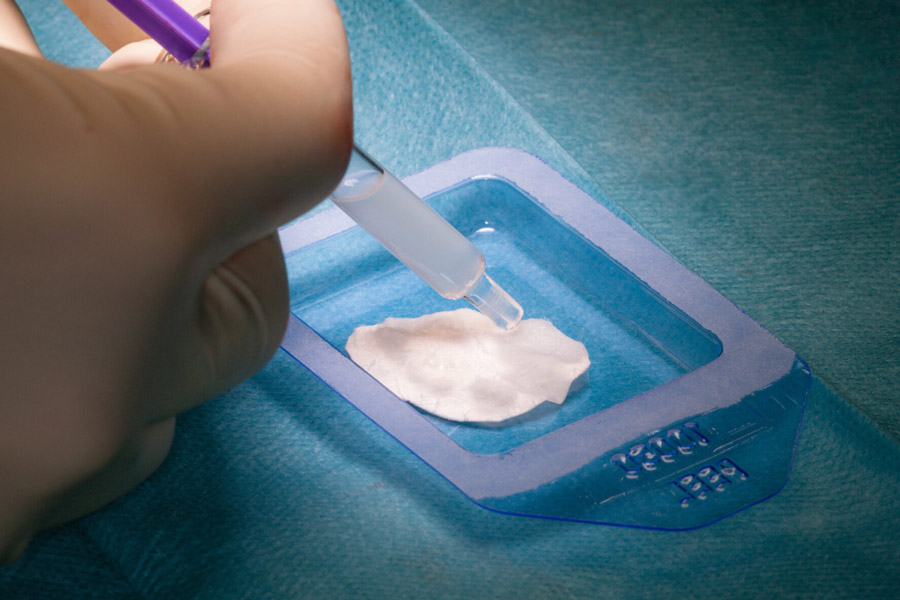Knorpelschaden
Regenerative Knorpeltherapie: Mikrofrakturierung und MACT
Knorpelschäden im Gelenk können durch Verletzungen, Überlastung oder degenerative Prozesse entstehen. Da der Gelenkknorpel eine begrenzte Selbstheilungskapazität besitzt, sind spezielle regenerative Verfahren notwendig, um die Funktion des betroffenen Gelenks wiederherzustellen.
Zu den bewährten Behandlungsoptionen zählen die Mikrofrakturierung für kleinere Knorpelläsionen und die matrix-assoziierte Chondrozyten-Transplantation (MACT) für größere Defekte.
Mikrofrakturierung
Diese Methode ist bei isolierten, kleinen (< 2 cm²), gut abgrenzbaren Knorpelläsionen mit erhaltener subchondraler Knochenschicht angezeigt.
Behandlungsmethode
Bei diesem regenerativen Verfahren werden arthroskopisch kleine Löcher in das Defektareal „gepickt“, aus denen dann mesenchymale Stammzellen einwandern und ein Regeneratknorpelgewebe bilden.
Individuelle Therapie für nachhaltige Gelenkerhaltung
Schonende, regenerative Verfahren zur Knorpelregeneration
Verbesserte Mobilität & langfristige Schmerzreduktion

Matrix-assoziierte Chondrozyten-Transplantation (MACT)
Behandlungsmethode
Grundsätzlich handelt es sich hierbei um ein zweizeitiges Verfahren:
- Erste OP: Arthroskopische Entnahme von Knorpelzellen aus einem minderbelasteten Randbereich des Kniegelenks.
- Zellvermehrung im Labor: Die entnommenen Knorpelzellen werden angezüchtet, vermehrt und auf eine biphasische Matrix aufgebracht.
- Zweite OP: Nach ca. 3 Wochen wird das dreidimensionale Konstrukt minimalinvasiv in den Knorpeldefekt transplantiert.
Zusätzliche Behandlung bei Knochenschäden
Ist der darunterliegende Knochen ebenfalls betroffen, so kann der Defektgrund zunächst mit körpereigener (autologer) Knochenspongiosa unterfüttert werden. Anschließend werden die Knorpelzellen darüber implantiert.
Moderne Knorpeltherapie für Ihre Mobilität!
Lassen Sie sich beraten!
Vereinbaren Sie jetzt einen Termin zur persönlichen Untersuchung und Behandlung:
+49-(0)89 4140-7840
sportortho@mri.tum.de
Haus 524
Ismaninger Str. 22
81675 München

